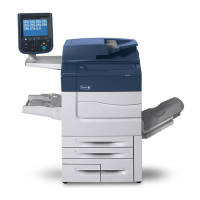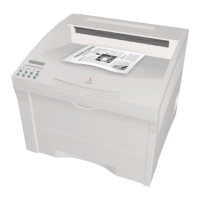Instruction Name Mnemonic
Floating
Subtract
Long
FSL
Floating
Multiply
Short
FMS
Floating
Multiply
Long
FML
Floating Divide Short
FDS
Floating Divide
Long
FDL
FLOATING-POINT
NUMBERS
Two
number formats
are
accommodated for
floating-point
arithmetic:
short and long. A short-format
floating-point
number consists
of
a sign (bit 0), a
biased
t
, base
16
expo-
nent,
which
is
called
a
characteristic
(bits
1-7),
and a
six-digit
hexadecimal
fraction
(bits 8-31). A long-format
floating-point
number consists
of
a short-format
floating-
point
number followed
by
an
additional
eight
hexadecimal
digits
of
fractional
significance,
and
occupies
a
double-
word memory location
or
an
even-odd
pair
of
general
registers.
A
floating-point
number (N) has
the
following format:
1
+1
Character-I : : 1
-
istic
(C) Fraction
(F)
6 I 2
314
5 6
78
9
1011112
13
14
15
16
17
18
19120
2122
23
242526271282930
31
A
floating-point
number (N) has
the
following formal
definition:
1.
C-64
N = F x 16 where F = 0
or
-6
16
$IFI
$ 1 (short format) or
-
i4
16 $IFI $ 1 (long format)
and
0 $ C
~
127.
2. A
positive
floating-point
number
with
a fraction
of
zero
and
a
characteristic
of
zero
is a
"true"
zero.
A
positive
floating-point
number
with
a fraction
of
zero
and
a nonzero
characteristic
is
an
"abnormal"
zero.
For
floating-point
multiplication
and division,
an abnormal
zero
is
treated
as a true
zero.
However,
tThe bias
value
of
4016
is
added
to the
exponent
for the
purpose
of
making
it
possible to compare
the
absolute
mag-
nitude
of
two numbers,
i.
e.,
without
reference
to a sign
bit.
This manipulation
effectively
removes the sign
bit,
making
each
characteristic
a
7-bit
positive number.
74
Floating-Point
Arithmetic Instructions
for
addition
and
subtraction,
an abnormal
zero
is
treated
the
same as
any
nonzero
operand.
3.
A positive
floating-point
number
is
normalized if
and
only
if
the
fraction is
contained
in
the
interval
1/16
$ F < 1
4.
A
negative
floating-point
number
is
the two's
comple-
ment
of
its positive
representation.
5.
A
negative
floating-point
number
is
normalized
if
and
only
if
its
two's complement is a normalized positive
number.
By
this
definition,
a
floating-point
number
of
the form
1 xxx xxxx
1111
0000 .
..
0000
is
normalized,
and a
floating-point
number
of
the
form
1 xxx xxxx
0000 0000 .
..
0000
is
illegal
and,
whenever
generated
by
floating-point
in-
structions,
is
converted
to the form
1
yyy
yyyy
1111
0000 .
..
0000
where
yy
...
y
is
1 less than
xx
•.•
x. Table 7
contains
examples
of
floating-point
numbers.
Modes
of
Operation
There
are
four mode control bits
that
are
used to
qualify
floating-point
operations. These mode control bits
are
identified
as
FR
(floating round),
FS
(floating
significance),
FZ (floating zero), and FN (floating normalize); they
are
contained
in
bit
positions
4,
5,
6,
and 7,
respectively,
of
the program status words (PSWs4_7).
The
floating-point
mode is
established
by
setting
the
four
floating-point
mode control bits. This
can
be performed by
any
of
the following instructions:
Instruction Name
Load Conditions and Floating Contro
I
Load Conditions and Floating Control
Immediate
Load Program
Status Words
Exchange Program Status Words
Mnemonic
LCF
LCFI
LPSD
XPSD
The
floating-point
mode control bits
are
stored by
execut-
ing
either
of
the::
following insrrucrions:
Instruction Name
Mnemonic
Store Conditions and Floating Control
STCF
Exchange Program Status Words
XPSD
